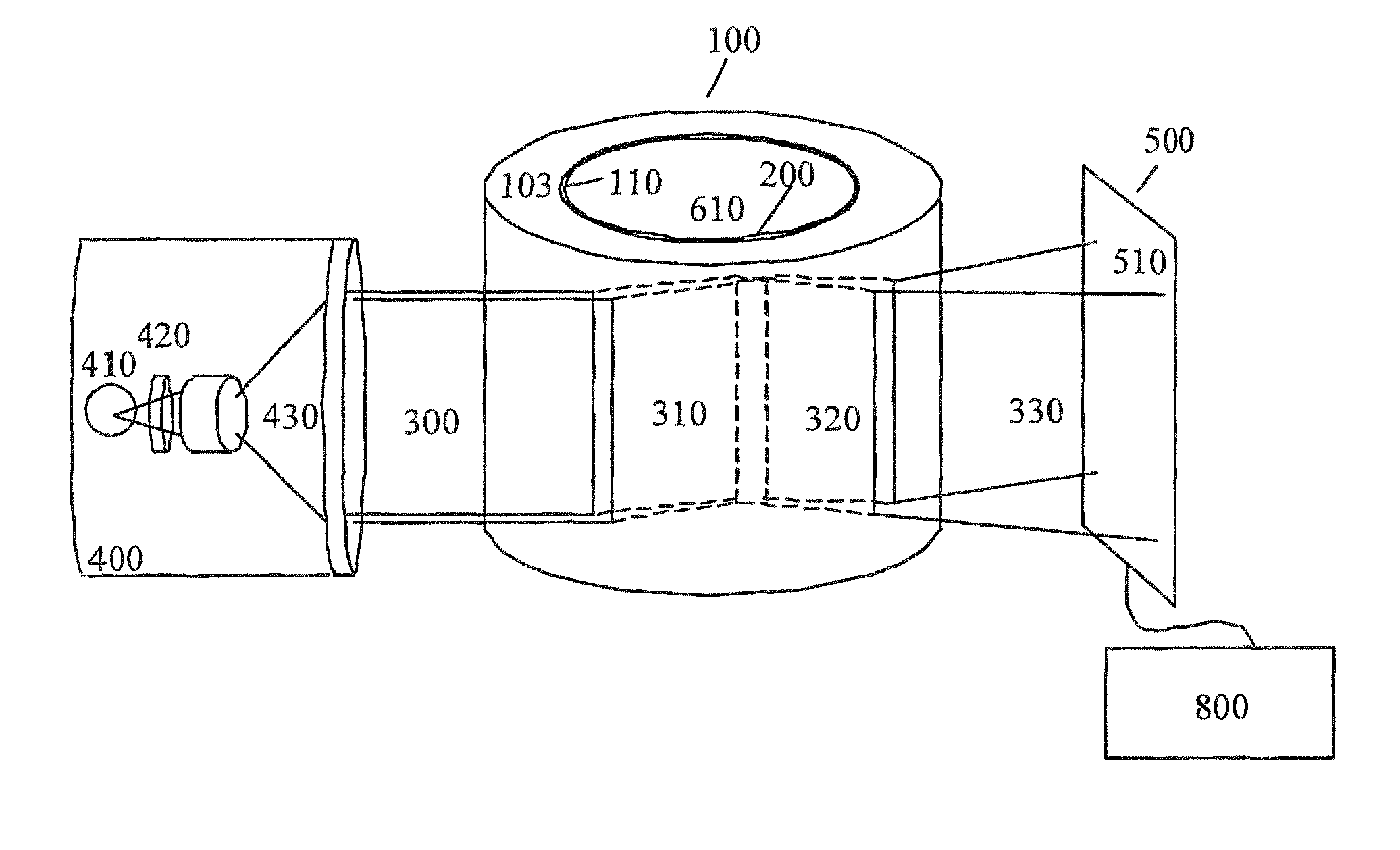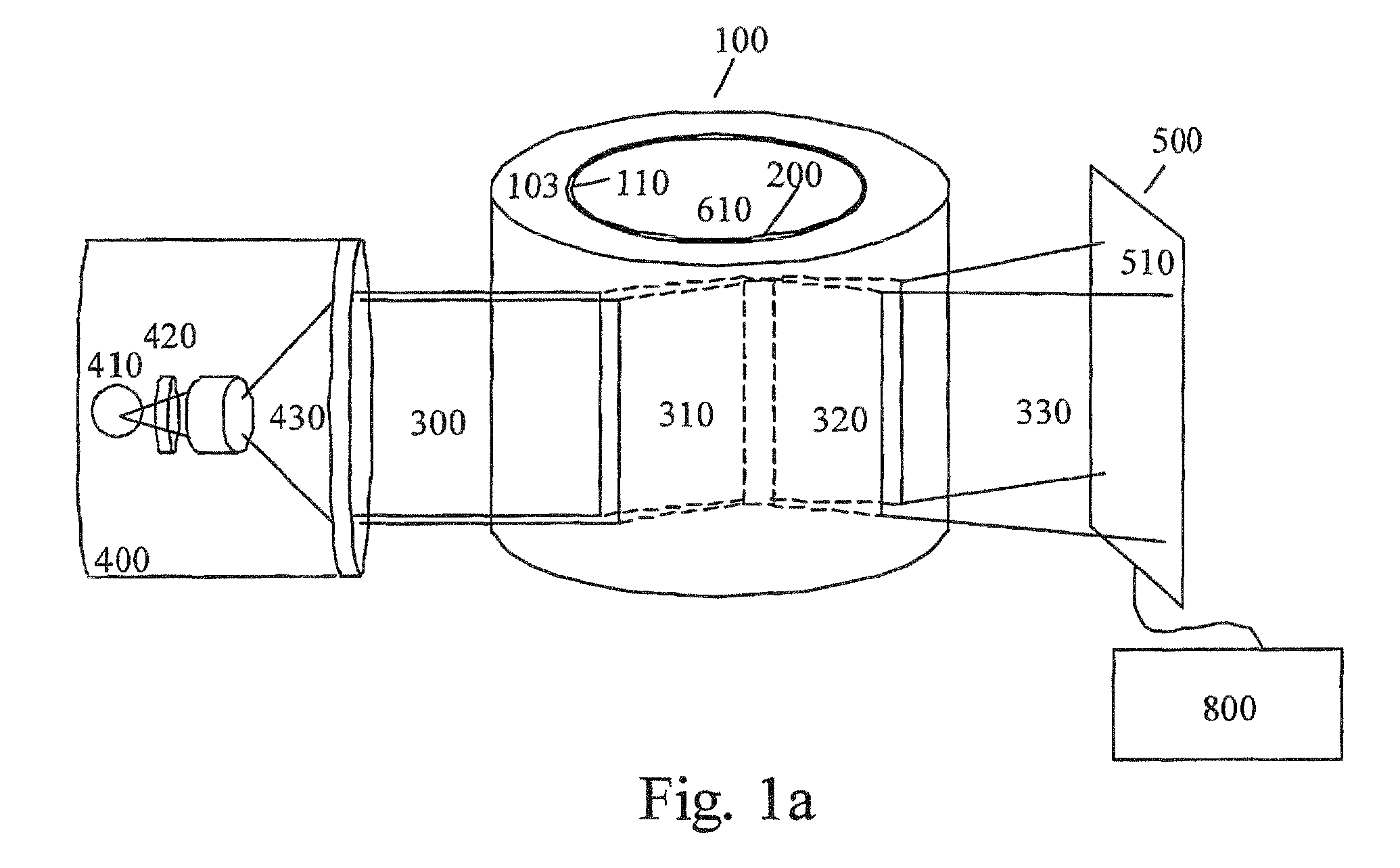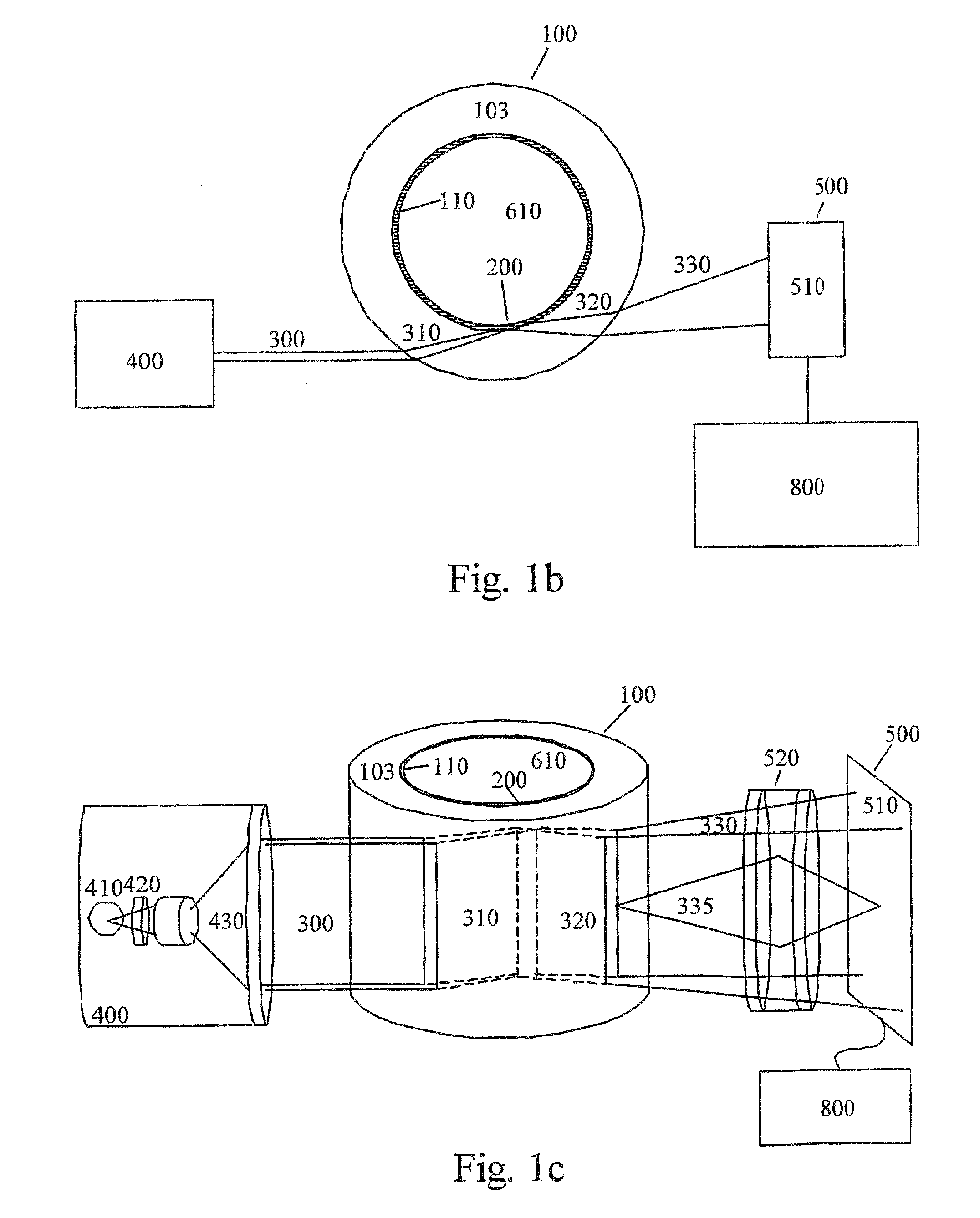Sensor unit for a surface plasmon resonance (SPR) unit
a surface plasmon and sensor technology, applied in the field of surface plasmon resonance (spr) sensors, can solve the problems of high cost, wear, and wear of opto-gels, and achieve the effect of convenient and inexpensive manufacturing
- Summary
- Abstract
- Description
- Claims
- Application Information
AI Technical Summary
Benefits of technology
Problems solved by technology
Method used
Image
Examples
example 1
Experiments
[0151]FIG. 22a, illustrates the signal from the detector 500, seen on the computer 800 from one embodiment of the surface plasmon resonance apparatus of the invention as illustrated in FIG. 3a-b. The embodiment utilizes a monochromatic light source comprising a 5 mW HeNe laser (Melles-Griot) 400, emitting coherent and p-polarized (with respect to the sensor surface) light 300 at a wavelength of 633 nm. The light 300 impinges on the outer surface of the substrate 103 made of Duran (Schott) glass with a refractive index of 1.5, and with outer and inner diameters of 15 mm and 10 mm respectively. The glass substrate is sputtered with approximately 0.5 nm chromium acting as the adhesion layer 105 for the surface plasmon supporting metal layer 110. The surface plasmon supporting metal layer 110 is sputtered to a thickness of 50 nm. Both metal layers 105 and 110 are deposited using physical vapor deposition techniques (PVD). Sample 200 consists of sucrose solutions ranging from ...
PUM
| Property | Measurement | Unit |
|---|---|---|
| diameter | aaaaa | aaaaa |
| diameter | aaaaa | aaaaa |
| diameter | aaaaa | aaaaa |
Abstract
Description
Claims
Application Information
 Login to View More
Login to View More - R&D
- Intellectual Property
- Life Sciences
- Materials
- Tech Scout
- Unparalleled Data Quality
- Higher Quality Content
- 60% Fewer Hallucinations
Browse by: Latest US Patents, China's latest patents, Technical Efficacy Thesaurus, Application Domain, Technology Topic, Popular Technical Reports.
© 2025 PatSnap. All rights reserved.Legal|Privacy policy|Modern Slavery Act Transparency Statement|Sitemap|About US| Contact US: help@patsnap.com



